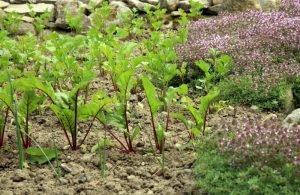Last Updated on June 5, 2025 by teamobn
The Mediterranean has been a treasure trove of garden designs for hundreds of years. Beautiful, luxurious, and pragmatic, the style of the region developed out of the dizzying diversity of Mediterranean history.
Despite its antiquity and exotic provenance, however, the Mediterranean backyards design has today found a place in parks and backyards throughout the world.
Designing Mediterranean Backyards
Contents
- 1 Designing Mediterranean Backyards
- 1.1 Designing Pathways and Patio Layouts for Mediterranean Backyards
- 1.2 Materials and Patterns
- 1.3 Shapes and Flow
- 1.4 Colors and Textures
- 1.5 Integrating Plant Borders
- 1.6 Maintenance and Durability
- 1.7 Incorporating Water Features to Your Mediterranean Backyards
- 1.8 Fountain Styles and Materials
- 1.9 Strategic Fountain Placement
- 1.10 Designing Bird Baths
- 1.11 Planting Around Water Features
- 1.12 Maintenance Tips for Water Features
- 2 Conclusion
Countless landscape artists and amateur gardeners have successfully replicated the style in varying climates and terrain. You can, too!
If you’ve been thinking about transforming your garden in
this style, here are a few ideas to get you started.
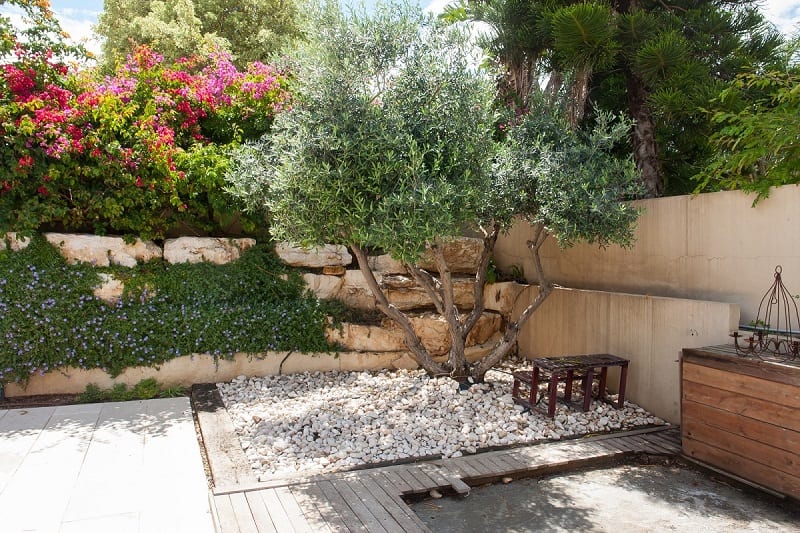
Go for fragrance and color.
Think flamboyant flowers in terracotta pots and lush,
trailing climbers tumbling over walls. A Mediterranean garden should smell
good, too. Pick plants for the richness of their fragrance as well as their vibrant
colors.
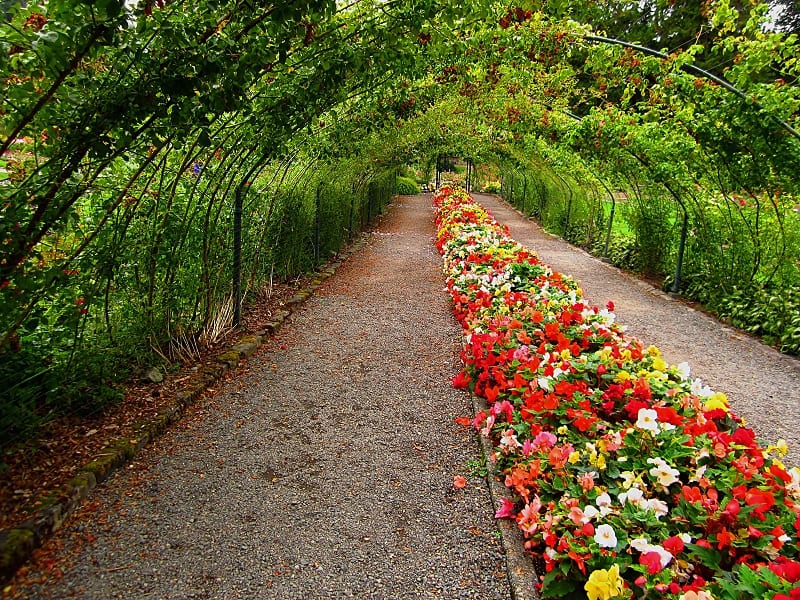
The classic choices include olive trees, cacti, succulents,
citrus, rosemary, and bougainvillea. If
you have clay soil, you can improve it by adding organic matter and horticultural
grit for drainage.
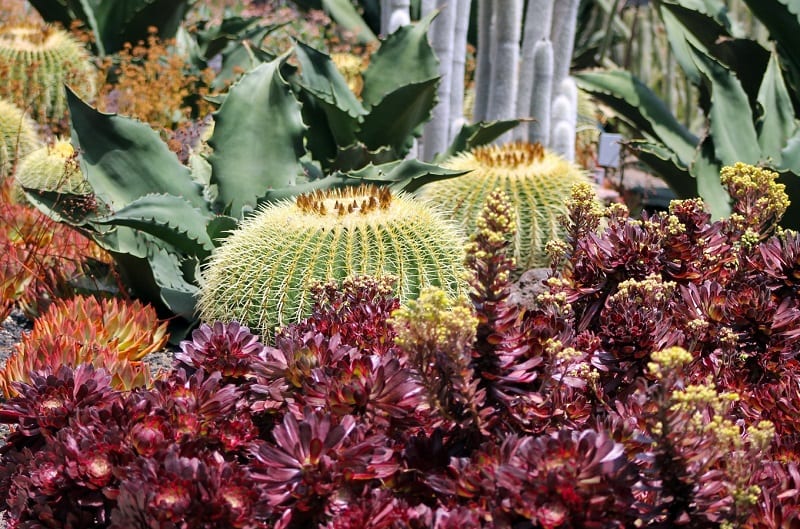
Shade is essential.
Shade is an integral part of the Mediterranean garden. If you have space, a pergola draped in climbing plants would be an excellent touch.
If space is limited, consider a smaller archway or even just some high fencing to evoke the Mediterranean look. Make sure to train climbing greenery over these structures, too.
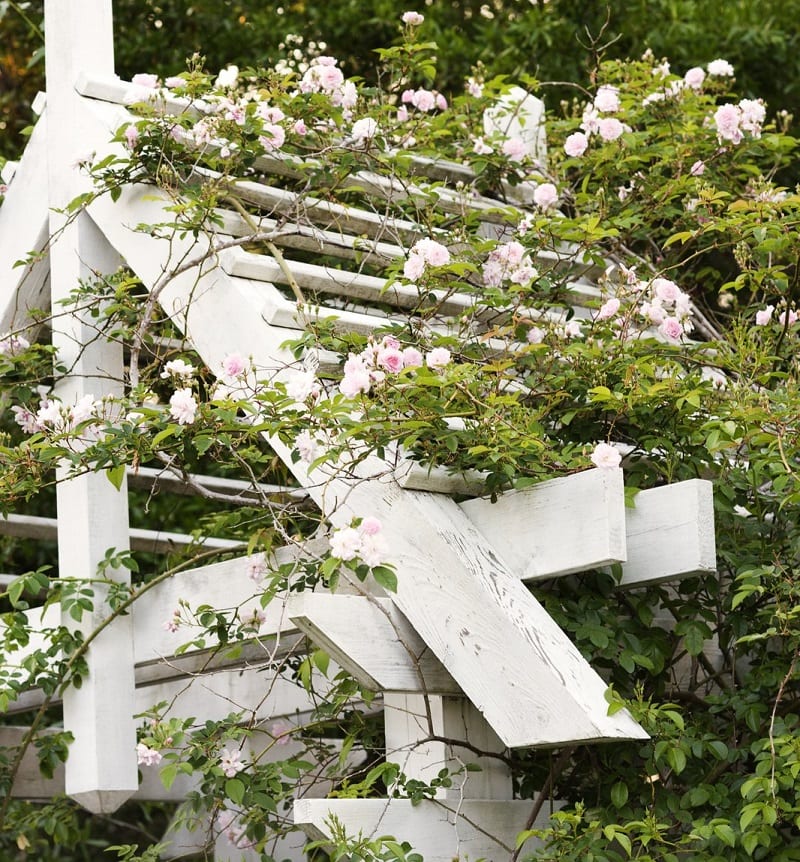
Use tiles rather than turf.
Mediterranean design styles forego lawns in favor of gravel and paving stones, which make them perfect for smaller spaces. Chose warm-colored paving stones in pink and red hues, or gravel and natural stone styles, says horticulturist and TV personality, David Domoney.
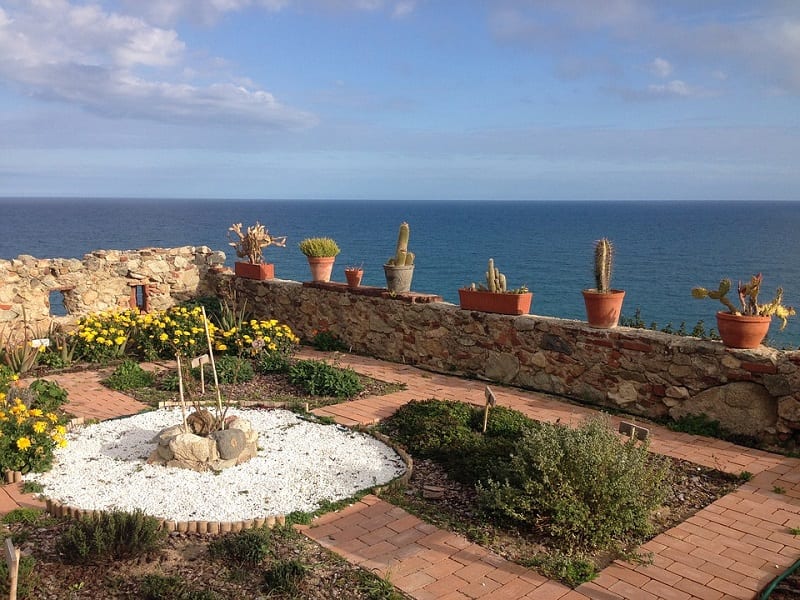
Without a lawn, you may feel like there is a lot of empty space. You can divide your garden into sections using pathways lined with plants and herbs. Mosaics add a beautiful and authentic extra touch.
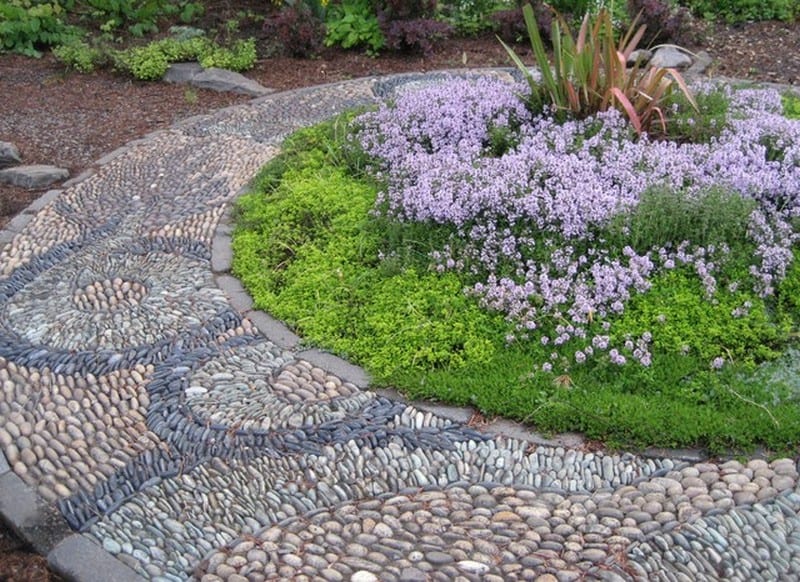
Add your own finishing touches!
Given its origins, the Mediterranean style should lend itself particularly well in places where winters are wet and summers are hot and dry. California and parts of Southern and Western Australia come to mind.
But that does not mean you can’t design a Mediterranean-style garden of your own if you live elsewhere in the world. It just means that you are free to improvise, be creative, and add a personal touch to your backyard paradise.
Wrought iron outdoor furniture will create an open-air dining area. Install lounges and you’ll transform boring turf into a luxurious open-air living room or cocktail corner.
Mediterranean gardens are all about laid-back outdoor living: lingering over alfresco meals with friends and family, taking a refreshing siesta, and delighting the senses with heady scents and colors.
Like all gardens, they are there for you to enjoy.
Designing Pathways and Patio Layouts for Mediterranean Backyards
Pathways and patios set the foundation for a Mediterranean-inspired backyard. Warm materials and organic layouts create an inviting, rustic, sophisticated outdoor space that captivates.
Materials and Patterns
Natural stone, terracotta pavers, and gravel form the backbone of a Mediterranean pathway. Choose irregular flagstones or interlocking bricks for an authentic, hand-laid appearance. Incorporate patterns like herringbone or basketweave to evoke old-world charm.
Gravel fills between stones enhance drainage and prevent weeds, while providing a subtle crunch underfoot. Opt for warm tones, sandy beiges, terracotta reds, sun-baked browns, that harmonize with surrounding plants.
These materials weather beautifully over time, developing a patina that deepens the backyard’s timeless appeal.
Shapes and Flow
Straight lines feel rigid in a Mediterranean garden; instead, embrace gentle curves and winding routes. Curved pathways guide visitors through different garden rooms, revealing new focal points at each turn.
Begin wider at entry points and taper slightly as you move deeper, creating a sense of discovery. Soft bends look more natural and invite leisurely strolls.
When integrating a patio, ensure its edges echo pathway curves to maintain design continuity. Thoughtful shaping fosters an organic flow that mirrors the relaxed pace of Mediterranean living.
Colors and Textures
Warm hues define Mediterranean hardscaping. Select paving stones and pavers in sun-drenched yellows, terracotta reds, and rosy pinks to emulate coastal landscapes. Textured surfaces,like tumbled stone or aged terracotta, add visual depth and prevent slipperiness when wet.
Combining smooth and rough textures enhances contrast; for example, pair a smooth travertine patio with rough-hewn stone edging. Introduce mosaic accents using ceramic or glass tiles in cobalt, turquoise, or amber for a splash of Mediterranean flair. Balance bold colors with neutral gravel or pale stone to avoid overwhelming the eye.
Integrating Plant Borders
Fragrant, low-growing herbs and flowers soften pathway edges and reinforce Mediterranean character. Lavender, thyme, and rosemary spill gently over borders, filling the air with scent as you walk.
Plant these along pathways and patio perimeters, using natural stone or low brick edging to contain beds. Intermix small succulents or ornamental grasses to add texture and break up continuous greenery.
In tighter spaces, use terracotta pots filled with herbs to define edges. Over time, these plantings mature into living borders that guide foot traffic and heighten sensory appeal.
Maintenance and Durability
Mediterranean-style hardscapes require minimal upkeep but benefit from occasional attention. Ensure pathways have a slight slope or built-in drainage channels to prevent standing water. Replenish gravel annually and sweep debris off patios to maintain a clean appearance.
Pull weeds regularly in gravel joints and between pavers; applying a weed barrier or polymeric sand can help reduce growth. Inspect stone and tile surfaces for chips or cracks, repairing promptly to avoid further damage. Proper design and quality materials guarantee that pathways and patios remain durable under sun, rain, and foot traffic.
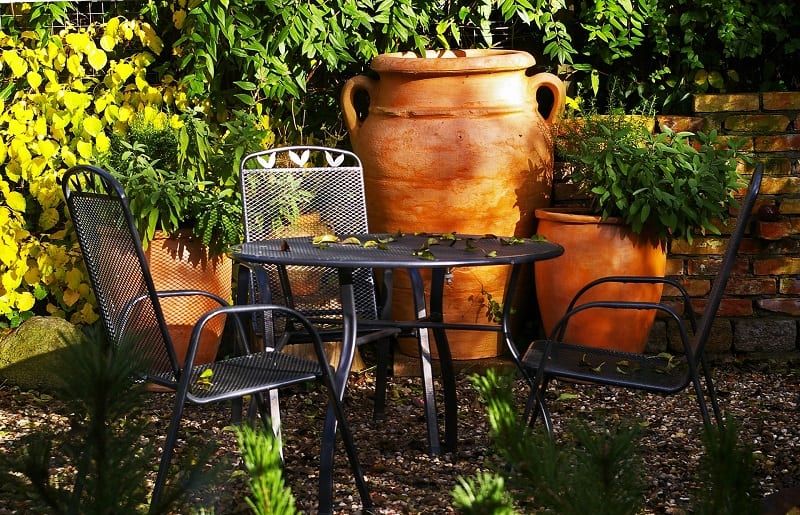
Incorporating Water Features to Your Mediterranean Backyards
Water features bring cool serenity to outdoor spaces and echo Mediterranean traditions. Fountains and bird baths enrich a Mediterranean backyard with sound, movement, and wildlife.
Fountain Styles and Materials
Stone tiered fountains offer classic charm and age gracefully under sun and rain. Ceramic wall-mounted fountains add vibrant color and reflect local craftsmanship.
Mosaic-tiled basins evoke Italian and Spanish influences. Cast stone and terra cotta options work well when budget and durability both matter. Select warm-hued materials that blend with clay pots and terracotta pavers.
Consider rough-hewn limestone for a rustic look or smooth travertine for a refined touch. Each material influences sound and water flow. Choose styles that resonate with your overall vision for a Mediterranean backyard.
Strategic Fountain Placement
Position fountains where their gentle murmur carries to seating areas. A corner near a pergola or beneath olive trees makes a quiet retreat. Wall-mounted fountains save space and add vertical interest on stucco or stone walls.
Placing a fountain in a courtyard or central plaza creates a natural gathering spot. Ensure a clear view from patios and dining nooks to enjoy the visual and auditory experience.
Avoid locations under heavy foliage that may drop leaves and debris. Proper placement transforms a Mediterranean backyard into a living work of art, inviting guests to linger.
Designing Bird Baths
Choose shallow basins with gently sloping edges so birds can enter and exit safely. Natural stone bowls or glazed ceramic dishes blend seamlessly with surrounding greenery. Position bird baths away from dense shrubbery to deter predators and give birds clear flight paths.
Incorporate small pedestals or stand-alone pedestals made from stone, concrete, or metal for height variation. Line the basin with smooth pebbles or river rocks to offer perching spots. Add a dripper or small bubbler to keep water fresh and moving, attracting a wider variety of birds. This detail elevates any Mediterranean backyard by creating moments of delight.
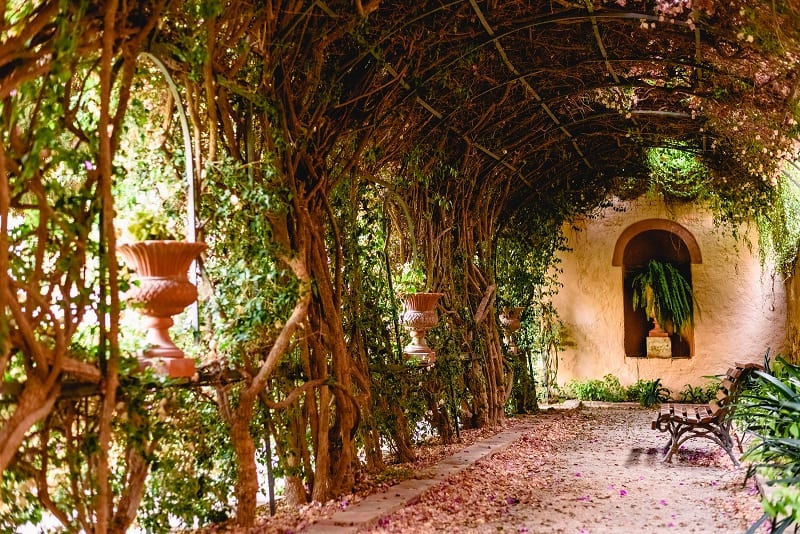
Planting Around Water Features
Surround fountains and bird baths with fragrant, low-maintenance plants to soften edges. Lavender, rosemary, and sage thrive in rocky soils and exude heady scents. Use creeping thyme or santolina at basin edges for a lush groundcover that releases fragrance when brushed.
Add low-growing ornamental grasses to introduce movement and contrast with stone textures. Terracotta pots filled with succulents or trailing ivy placed nearby create layers of interest. Select drought-tolerant species to minimize water needs in a Mediterranean backyard. Strategic plantings not only beautify but also help screen pumps and plumbing.
Maintenance Tips for Water Features
During warm months, check and clear debris weekly to keep pumps clean. Scrub algae from basins with a soft brush and refill with fresh water every two weeks. Use a fine mesh net to remove fallen leaves and petals before they clog filters.
If freezes occur, winterize fountains and bird baths by draining water and covering with protective tarps or moving smaller pieces indoors. Inspect seals regularly to prevent leaks that can damage surrounding hardscapes. Proper care ensures that water features remain focal points in a Mediterranean backyard for years to come.
Conclusion
Building Mediterranean backyards transforms your outdoor space into a vibrant retreat that feels both timeless and inviting. Careful choice of warm materials like terracotta and natural stone sets a solid foundation. Adding water features and fragrant, drought-tolerant plants enhances serenity and charm. Thoughtful layouts with curved pathways and shaded seating areas create an effortless flow and a sense of discovery.
You can still create an incredible garden without a backyard. Check out our guide on balcony urban gardening!




